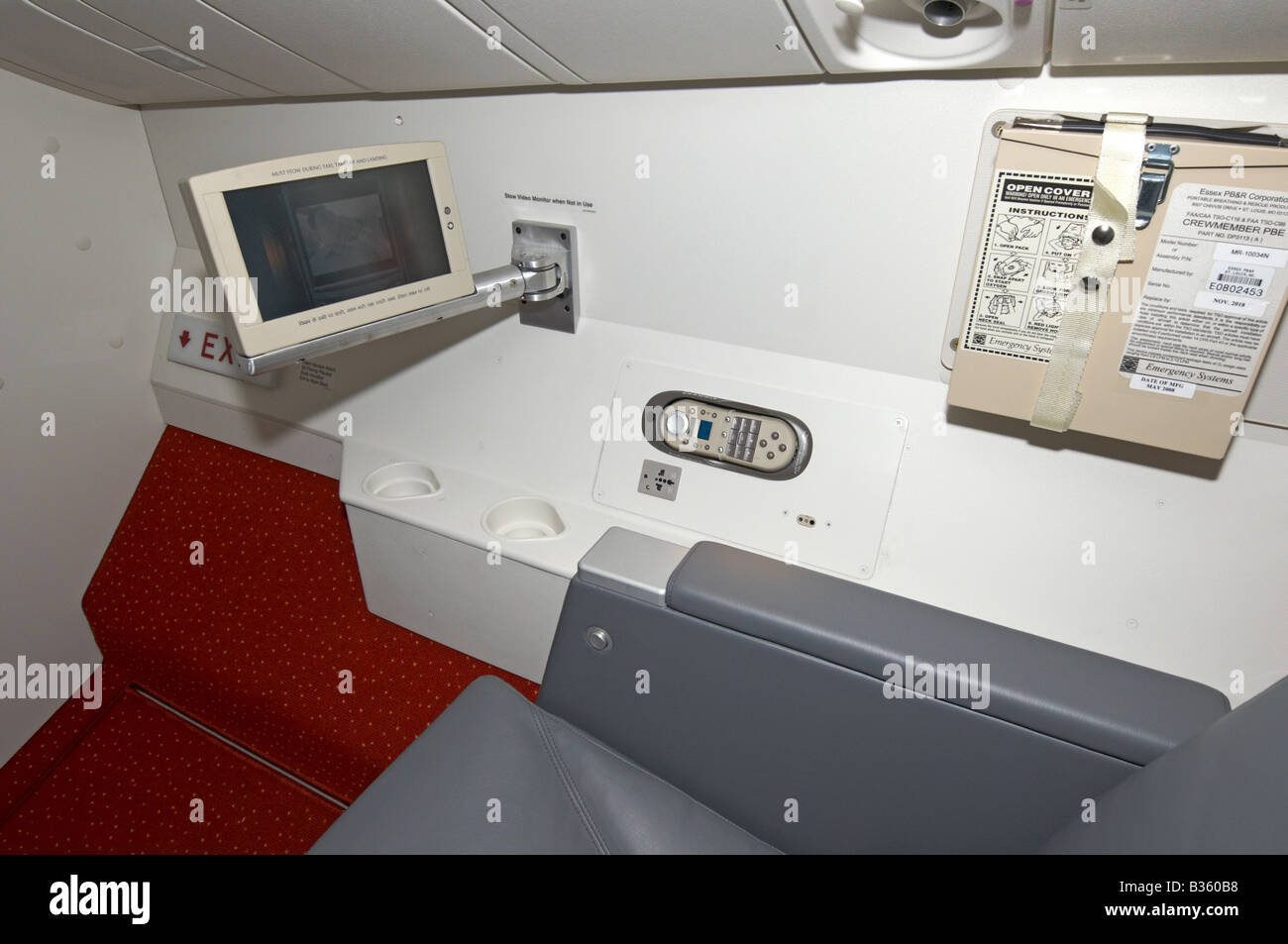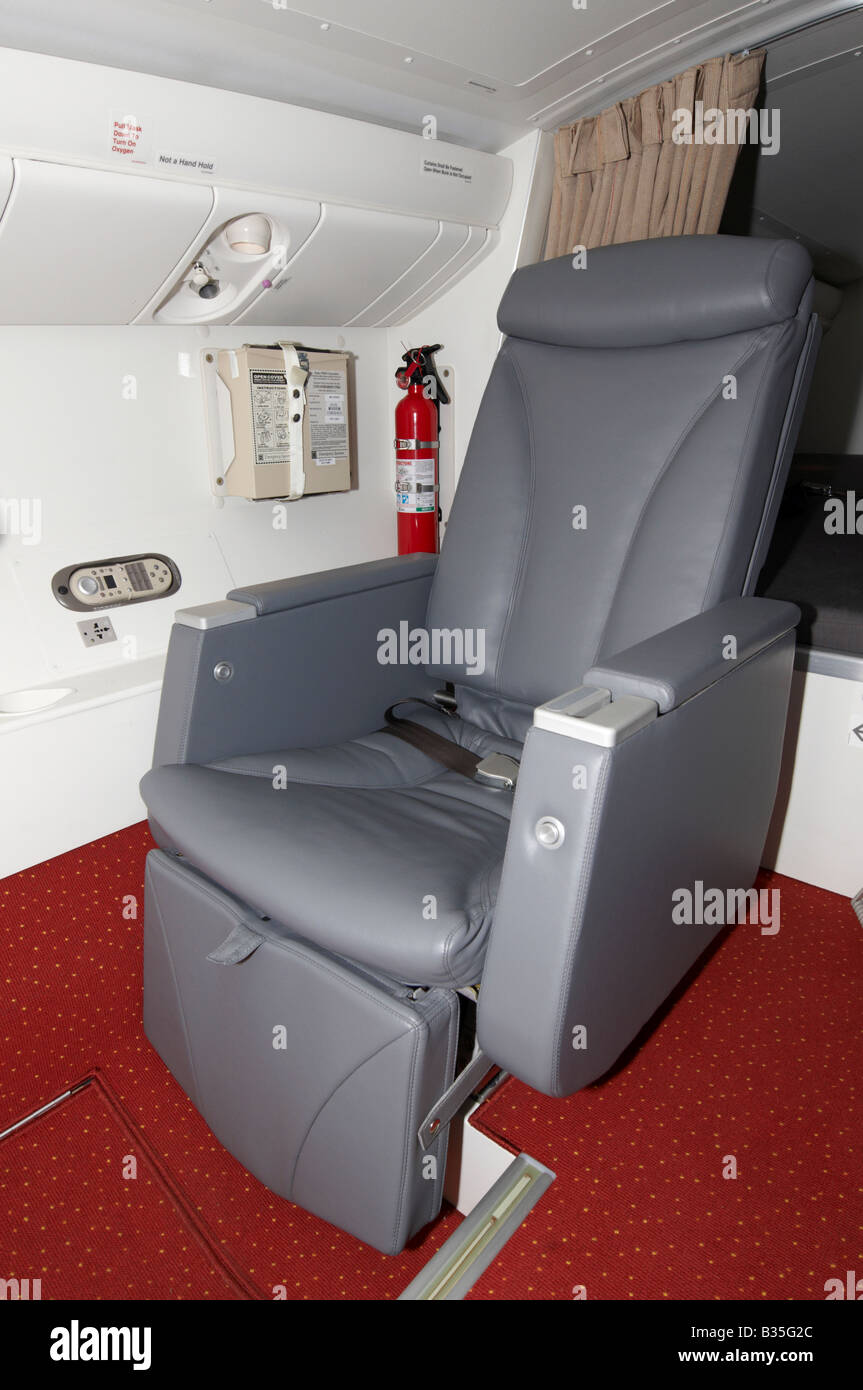Modern aviation has transformed the way we travel, but behind every successful flight lies the dedication of pilots and cabin crew who ensure passenger safety and comfort. The Boeing 777 crew rest area plays a crucial role in maintaining the efficiency and well-being of these professionals during long-haul flights. As a vital component of the aircraft's design, the rest area is engineered to provide maximum comfort and relaxation while adhering to stringent safety standards.
The Boeing 777 crew rest area is a key feature that exemplifies the aircraft's commitment to operational excellence. Designed with input from aviation experts, the rest area is tailored to meet the unique needs of flight personnel, ensuring they remain alert and refreshed throughout their duties. Understanding the intricacies of this area not only highlights the importance of crew welfare but also showcases the advanced technology and design principles that define the Boeing 777.
As we delve deeper into the world of aviation, it becomes evident that the Boeing 777 crew rest area is more than just a space for rest; it is a testament to the industry's dedication to safety, comfort, and operational efficiency. In this article, we will explore the various aspects of the crew rest area, including its design, functionality, and the regulations governing its use. Join us as we uncover the details that make this area an essential part of modern aviation.
Read also:Easy Hairstyles For Straight Hair Effortless Ways To Enhance Your Look
Table of Contents
- Design Overview of the Boeing 777 Crew Rest Area
- Location and Access to the Crew Rest Area
- Features and Comfort in the Rest Area
- Safety Standards and Compliance
- Regulatory Requirements for Crew Rest Areas
- Benefits for Crew Members
- The Role of Rest Areas in Long-Haul Flights
- Evolution of Crew Rest Area Design
- Comparison with Other Aircraft Models
- Future Developments in Crew Rest Areas
Design Overview of the Boeing 777 Crew Rest Area
The design of the Boeing 777 crew rest area is a marvel of engineering, blending functionality with comfort. Located strategically within the aircraft, the rest area is designed to provide a quiet and private space for crew members to rest during long flights. The layout includes bunk beds, seating areas, and essential amenities such as lighting controls, ventilation, and communication systems.
Space Optimization
Space optimization is a critical aspect of the crew rest area design. Engineers have meticulously planned the area to maximize space without compromising on comfort or safety. Each bunk bed is equipped with a privacy curtain, ensuring crew members can rest undisturbed. Additionally, the area is soundproofed to minimize noise from the cabin and engine, creating a peaceful environment conducive to rest.
Environmental Controls
Environmental controls are another key feature of the Boeing 777 crew rest area. Crew members can adjust lighting, temperature, and airflow to suit their preferences, enhancing their comfort during rest periods. These controls are designed to be user-friendly, allowing for easy adjustments without requiring technical expertise.
Location and Access to the Crew Rest Area
The location of the Boeing 777 crew rest area is carefully chosen to ensure accessibility and security. Typically situated near the cockpit or above the passenger cabin, the rest area is accessible only to authorized personnel. Access is controlled through a secure door, which can only be opened with a specific code or key, ensuring the privacy and safety of the crew.
Read also:Affordable Housing In Queens A Comprehensive Guide To Finding Your Perfect Home
Security Measures
Security measures are paramount in the design of the rest area. The door is equipped with advanced locking mechanisms, and access is monitored by the flight crew. In the event of an emergency, the rest area can be quickly sealed off to protect the crew from external threats. These measures reflect the industry's commitment to safeguarding both passengers and crew.
Features and Comfort in the Rest Area
The Boeing 777 crew rest area is equipped with a range of features designed to enhance comfort and convenience. From ergonomic furniture to state-of-the-art technology, every aspect of the area is tailored to meet the needs of flight personnel.
- Bunk Beds: Designed for maximum comfort, the bunk beds are equipped with high-quality mattresses and pillows.
- Lighting Controls: Adjustable lighting allows crew members to create a restful environment.
- Communication Systems: Integrated communication systems enable crew members to stay connected with the cockpit and cabin.
Safety Standards and Compliance
Safety is a top priority in the design and operation of the Boeing 777 crew rest area. The area complies with stringent safety standards set by aviation authorities worldwide. From fire-resistant materials to emergency oxygen systems, every component of the rest area is rigorously tested to ensure it meets the highest safety standards.
Fire Safety
Fire safety is a critical consideration in the design of the rest area. All materials used in the construction of the area are fire-resistant, and the space is equipped with smoke detectors and fire extinguishers. Regular inspections and maintenance ensure that these systems remain functional at all times.
Regulatory Requirements for Crew Rest Areas
Crew rest areas on the Boeing 777 must adhere to regulatory requirements set by aviation authorities such as the Federal Aviation Administration (FAA) and the European Union Aviation Safety Agency (EASA). These regulations dictate the size, location, and amenities required in the rest area to ensure the well-being of crew members.
FAA Guidelines
The FAA mandates that crew rest areas provide adequate space for rest and include essential amenities such as lighting, ventilation, and communication systems. Compliance with these guidelines ensures that crew members can perform their duties effectively and safely.
Benefits for Crew Members
The Boeing 777 crew rest area offers numerous benefits to flight personnel. By providing a comfortable and secure space for rest, the area helps reduce fatigue and improve alertness during long flights. This, in turn, enhances the overall safety and efficiency of the flight operation.
Improved Performance
Rested crew members are better equipped to handle the demands of their duties, leading to improved performance and passenger satisfaction. The availability of a dedicated rest area ensures that crew members can recharge during long-haul flights, maintaining their focus and energy levels throughout the journey.
The Role of Rest Areas in Long-Haul Flights
Long-haul flights pose unique challenges for flight personnel, making the availability of a crew rest area essential. The Boeing 777 crew rest area plays a crucial role in ensuring that crew members remain alert and focused during these extended flights. By providing a comfortable and secure space for rest, the area helps mitigate the effects of fatigue and jet lag.
Managing Fatigue
Fatigue management is a key concern in long-haul flights, and the crew rest area is a vital tool in addressing this issue. By allowing crew members to rest in a controlled environment, the area helps reduce the risk of fatigue-related errors, enhancing overall flight safety.
Evolution of Crew Rest Area Design
The design of crew rest areas has evolved significantly over the years, reflecting advancements in technology and changing industry standards. From basic sleeping quarters to state-of-the-art rest areas, the evolution of these spaces highlights the aviation industry's commitment to crew welfare.
Innovations in Design
Innovations in materials, technology, and ergonomics have transformed the design of crew rest areas. Modern rest areas incorporate features such as noise-canceling technology, advanced lighting systems, and smart communication devices, enhancing the overall experience for flight personnel.
Comparison with Other Aircraft Models
When compared to other aircraft models, the Boeing 777 crew rest area stands out for its innovative design and comprehensive features. While other models may offer similar amenities, the Boeing 777's rest area is distinguished by its focus on comfort, safety, and accessibility.
Key Differences
Key differences between the Boeing 777 crew rest area and those of other aircraft models include the size of the space, the quality of amenities, and the level of customization available. These differences reflect the Boeing 777's commitment to providing the best possible environment for its crew.
Future Developments in Crew Rest Areas
As technology continues to advance, the design of crew rest areas is likely to evolve further. Future developments may include the integration of smart technology, enhanced environmental controls, and even virtual reality systems to improve the rest experience for flight personnel.
Emerging Technologies
Emerging technologies such as artificial intelligence and machine learning could play a significant role in the future of crew rest areas. These technologies could be used to optimize space usage, monitor crew health, and enhance overall comfort and safety.
Conclusion
The Boeing 777 crew rest area is a testament to the aviation industry's dedication to crew welfare and operational efficiency. By providing a comfortable and secure space for rest, the area plays a crucial role in ensuring the safety and success of long-haul flights. As technology continues to advance, the design and functionality of crew rest areas are likely to improve further, offering even greater benefits to flight personnel.
We invite you to share your thoughts and experiences regarding the Boeing 777 crew rest area in the comments section below. Your feedback is valuable and helps us improve our content. Don't forget to explore other articles on our site for more insights into the world of aviation.



